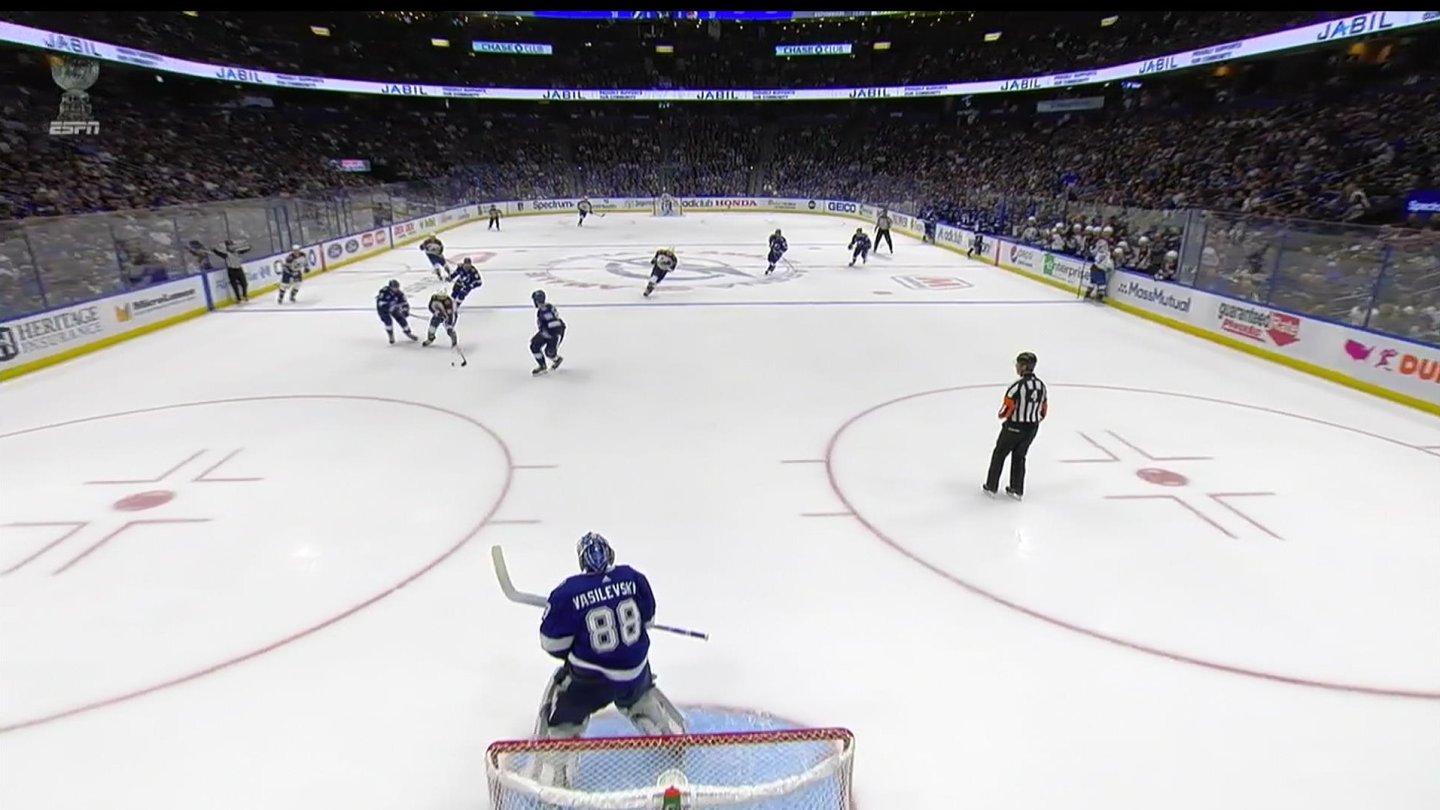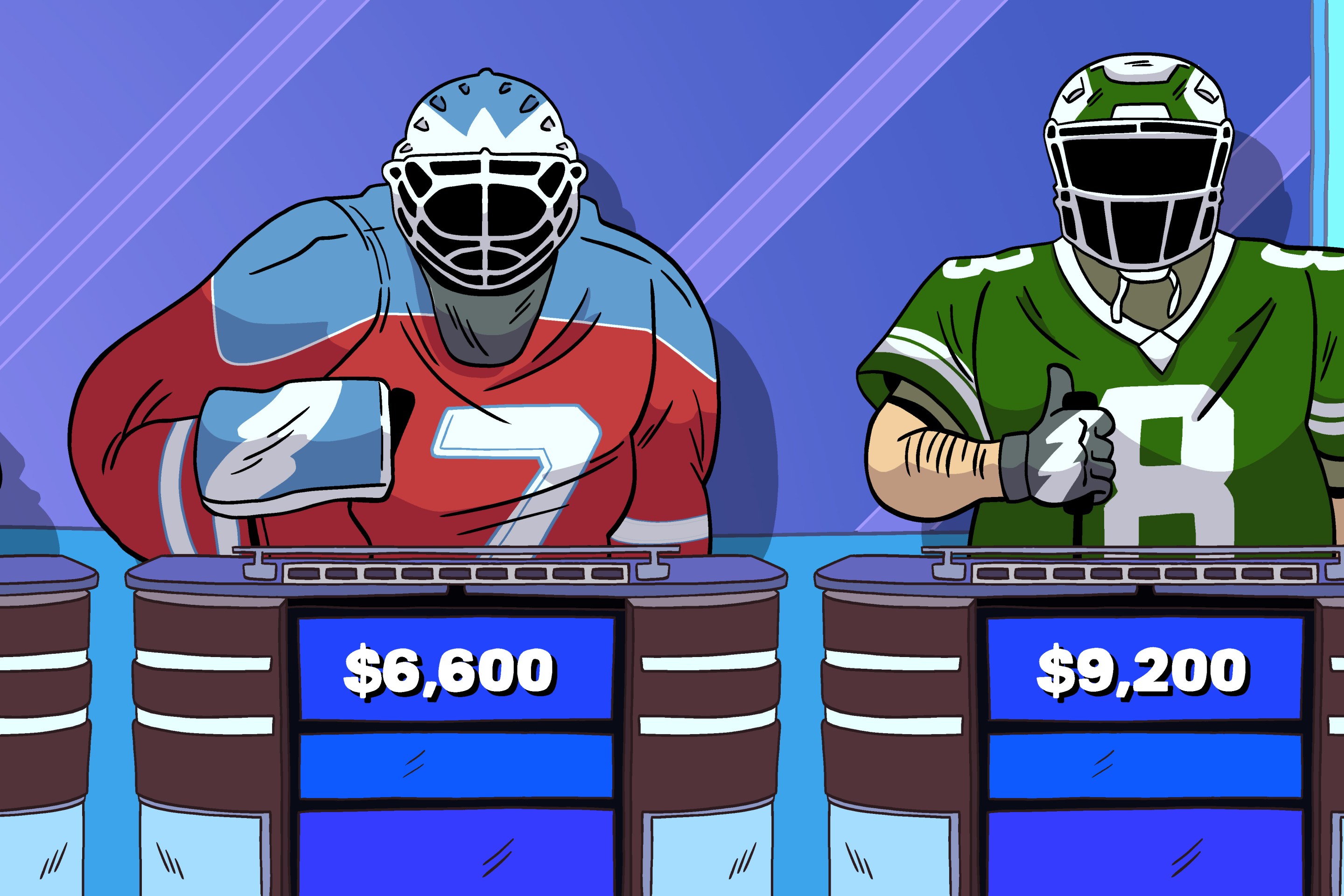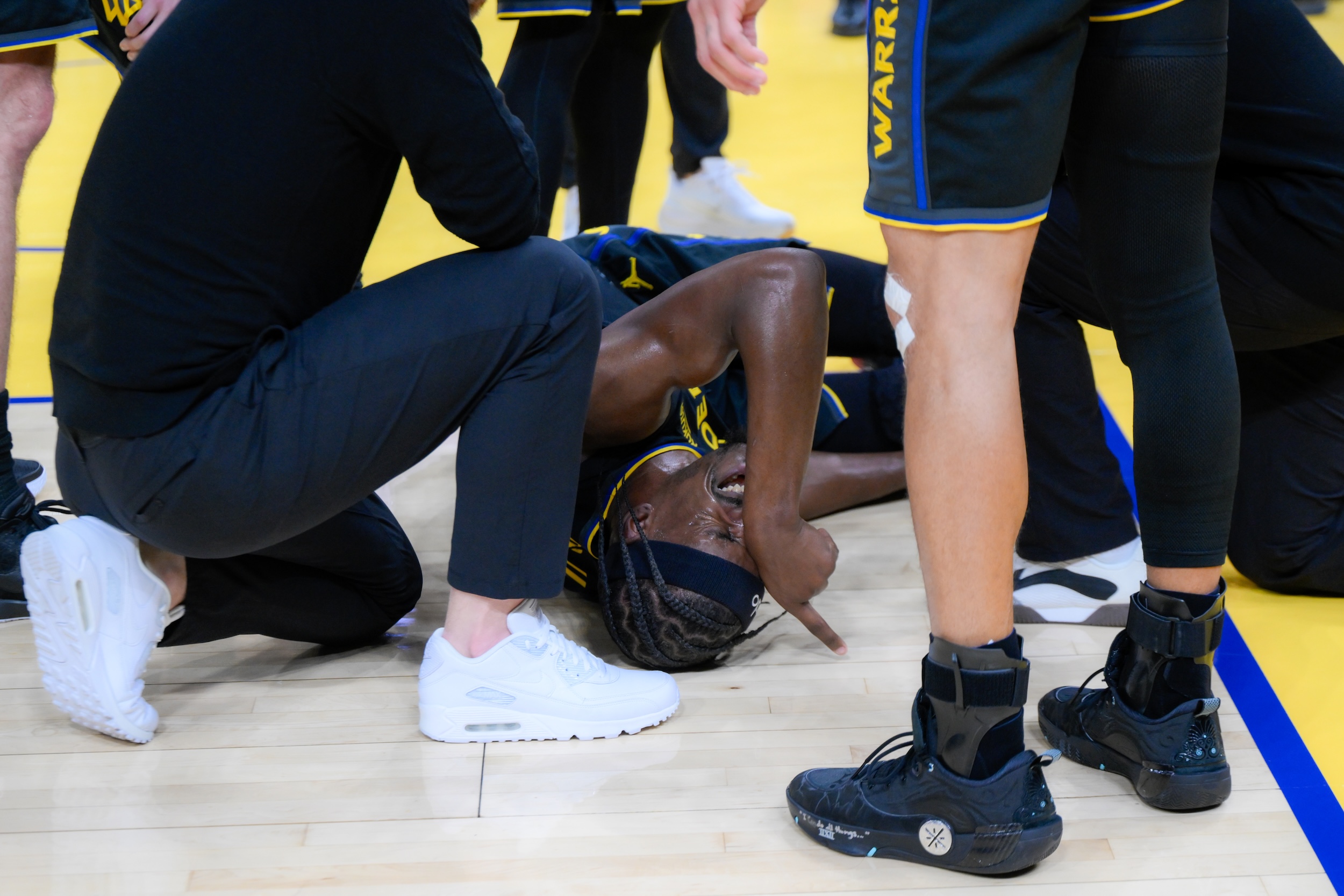Let's start, unconventionally, with the press conference. The entire press conference of Tampa coach Jon Cooper after Nazem Kadri's winner at 12:02 of overtime that gave the Avalanche a 3-1 Finals lead. It was just one question long—one bizarrely rambling answer that started with Cooper gushing about how much he loves the NHL and ending with a cryptic refusal to talk about the winning goal for reasons, Cooper intimated, that would soon become clear. Ominous! If you haven't already read up on what put the bee in Cooper's bonnet, you would be hard-pressed to contextualize any bit of this answer. It might even be a fun game for you: Try to guess what in the hell he's talking about.
OK, now Kadri's goal. It was a bit of a weird one, for reasons entirely unrelated to the actual controversy. Kadri, making his return from thumb surgery after an injury in Game 3 of the conference final, hopped off the bench, took a pass at the blue line, split the defensemen, and wristed one through an impossibly small gap in Andrei Vasilevskiy's armor. And no one realized it because the puck appeared to have evaporated.
But no, there it was, sitting atop its little shelf, safely in the net, and a hard-fought Game 4 was Colorado's. "This is what I’ve been waiting for my whole life," Kadri said.
Any drama lost in the delayed celebration was surely made up for by Cooper's dark implications. Those watching were baffled: The goal looked like a perfectly good goal, certainly more a sure thing than, say, Tampa's first goal of the night on a maskless Darcy Kuemper (which was also a good goal, it must be said).
It soon became clear that Tampa believed Colorado scored the game-winner with six skaters on the ice, and it should have been waved off and a too-many-men penalty assessed. Let's take a look with our patented Defector MegaZoom™. Count the Avs:

Indeed, that's six Avalanche skaters on the ice as Kadri approaches the top of the circle, with Nathan MacKinnon over on the right leaving—but not having left—the ice. Kadri was replacing MacKinnon on the change, and the Lightning believe Kadri hopped on too early.
“They were able to get an interesting change for the game-winning goal, and that was the difference,” Tampa assistant coach Derek Lalonde said. “It’s going to get ugly. We're probably talking about a 50-feet change. Obviously, Kadri changed for MacKinnon. It’s a pretty bad look. Unfortunately, we’re on the bad end of it.”
Here's the thing: That's a line change. A normal-ass line change. No one waits for the skaters to get off before hopping on. I am loath to use the construction "that doesn't get whistled in a playoff game," because that can imply that the no-call is solely a function of refs swallowing their whistles in the postseason, so I will simply say that doesn't get whistled in a regular-season game, either.
Too many men is, like every call in hockey except offside (a problem for another day), called to the spirit and not the letter of the law. This is good! You do not want whistles every time a team has six skaters on the ice during a change. You would go deaf from all the whistles. If they called the letter of the law, well, look at the above screengrab again: Tampa, making its own change, had seven skaters on.
Per the spirit of the law, Kadri jumped on the ice after MacKinnon had taken himself out of the play. No, MacKinnon wasn't the prescribed five feet from the bench, but that's basically a suggestion. And there was plenty of time for Tampa to pick up and put a body on Kadri—they just didn't.
NHL hockey operations put out a statement after the game emphasizing that these calls are functionally up to the officials, not the rulebook, and the officials saw what they saw.
A too many men on the ice penalty is a judgement call that can be made by any of the four on-ice officials.
Following the game, Hockey Operations met with the four officials as is their normal protocol. In discussing the winning goal, each of the four officials advised that they did not see a too many men on the ice situation on the play.
This call is not subject to video review either by Hockey Ops or the on-ice officials.
I get Tampa's frustration. It's a fluid enough rule that, if it went against me in a situation as crucial as this, I'd feel more unjustly persecuted than Jesus himself. But I'm not Tampa! I'm just a hockey blogger with no horse in the race, and the NHL where that's a good goal is better than an NHL where it's not.






